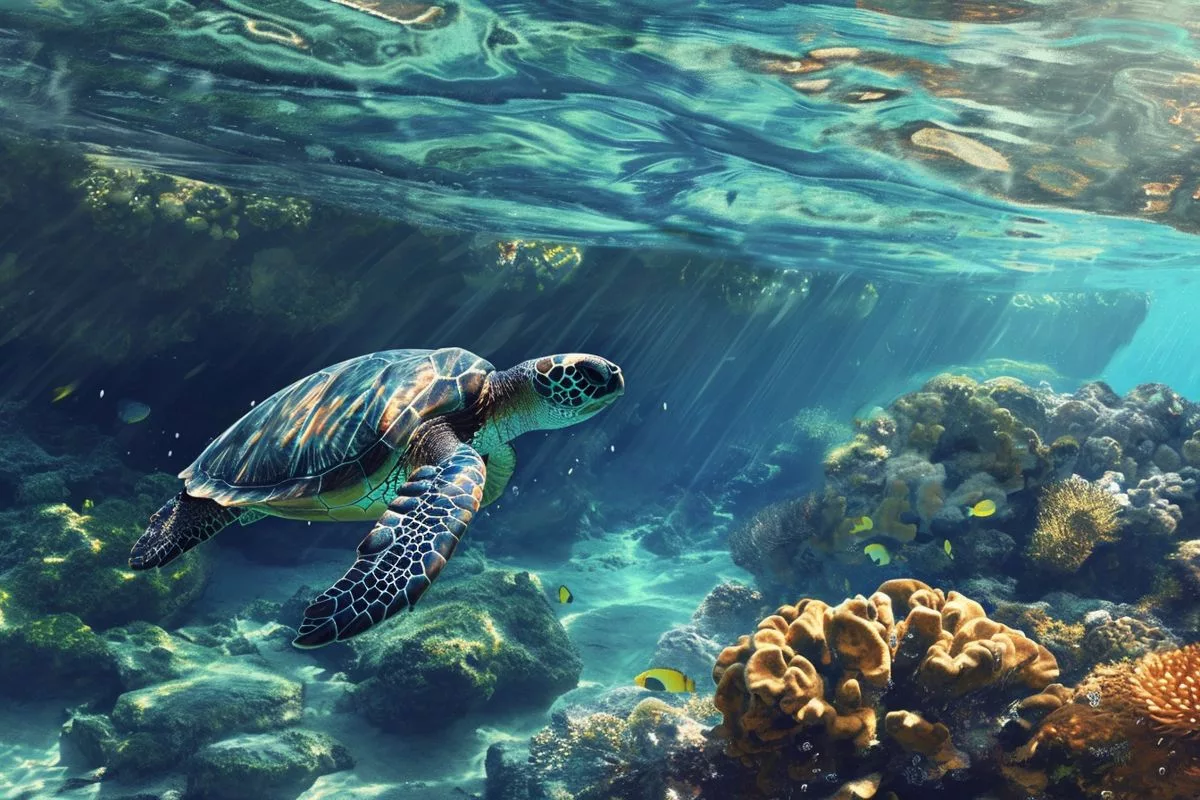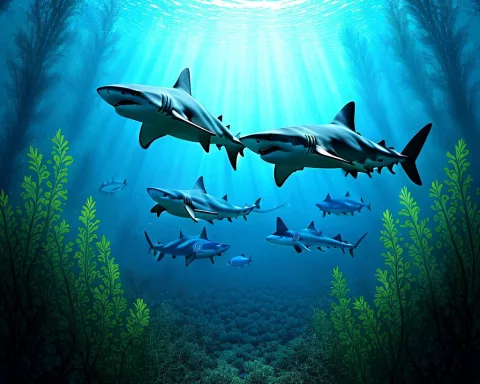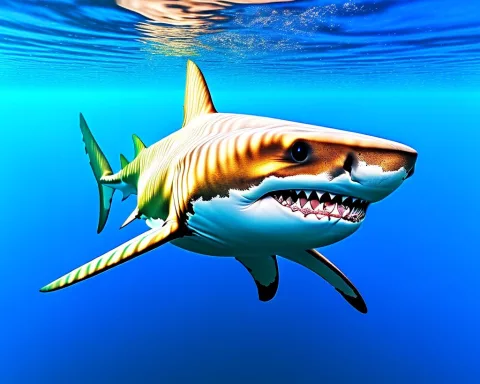Nobomvu, a loggerhead turtle nicknamed the “Red Lady,” was rescued from a ghost fishing net and diagnosed with osteomyelitis. The Turtle Conservation Centre invested two years in rehabilitating Nobomvu, equipping her with tracking devices to provide critical data for turtle conservation efforts. Nobomvu’s story serves as a reminder of the pressing need for a harmonious relationship with nature and the devastating impact of marine pollution on marine life.
The Grand Return of the “Red Lady”
Nobomvu, a loggerhead turtle, also known as the “Red Lady,” was rescued from a ghost fishing net and diagnosed with osteomyelitis. The devoted team at the Turtle Conservation Centre invested two years in Nobomvu’s rehabilitation, aiding her in reclaiming the strength she had lost during her ordeal. Nobomvu’s release was accompanied by tracking devices that provide critical data for turtle conservation efforts. Nobomvu’s story serves as a reminder of the pressing need for a harmonious relationship with nature.
The Grand Return of the “Red Lady”
The Two Oceans Aquarium Foundation’s Turtle Conservation Centre celebrated a landmark event on December 22, 2023, when a loggerhead turtle named Nobomvu, affectionately known as the “Red Lady,” returned to her natural habitat. The scene unfolded off the shores of Cape Point, where the temperate Agulhas Current ushers marine creatures back to their native homes.
The “Red Lady,” however, may have never experienced such a victorious comeback. On July 14, 2021, fishermen Kriston and Gordon discovered Nobomvu ensnared in a ghost fishing net at Quinn Point in Gaansbaai. The turtle, nearly enveloped entirely in a deadly synthetic net, weighed approximately 55kg – a striking equivalent to the weight of the net. Nobomvu’s distressing predicament underscored the immediate and crucial need for marine conservation.
The Battle of Rehabilitation
Nobomvu’s complications didn’t end with her entrapment. Subsequent examinations disclosed that she was battling osteomyelitis, a debilitating bone infection, in her right flipper. This grave diagnosis prompted the immediate intervention of the devoted team at the Turtle Conservation Centre, including Dr. Peter Berndt from Winelands Radiology. The team invested two strenuous years in Nobomvu’s rehabilitation, aiding the unique loggerhead turtle in reclaiming the strength she had lost during her ordeal.
The day of Nobomvu’s release was filled with jubilation. Accompanied by 28 energetic hatchlings and two lively yearlings, Nobomvu plunged into the inviting waves. Ayesha Cornelius, a sea turtle aquarist, reflected on the profound moment, underscoring the deep bond that had developed between the team and these extraordinary creatures.
Conservation Through Tracking and Understanding
As Nobomvu sets out on her new adventure, she carries a satellite tag, flipper tags, and a PIT tag. These tracking devices are designed to provide critical data for turtle conservation efforts. The resultant information will equip experts with a comprehensive understanding of turtle behavior and habitat, offering pivotal insights for crafting future conservation strategies.
A disheartening 71% of turtle rescues at the centre revealed plastic ingestion. This stark statistic highlights the devastating impact of marine pollution and the human-made threats endangering marine life. Ghost fishing gear, especially, poses a serious threat to air-breathing marine animals such as turtles.
The Legacy of Nobomvu
Nobomvu’s story, albeit fraught with hardships, stands as a powerful testament to resilience and a stern reminder of the pressing need for a harmonious relationship with nature. Talitha Noble-Trull, the manager of the conservation centre, views turtles as ancient embodiments of resilience, leading humanity towards a more sustainable interaction with nature.
Mirroring Noble-Trull’s sentiments, Dr. Peter Berndt encapsulated Nobomvu’s journey: ‘Nobomvu symbolises much of human abuse of the ocean, but her unbelievable resilience also symbolises hope. Certainly, it is worth every effort to help her species. These are the life lessons she has taught me: never give up, trust the hand that is helping you, live in hope, and grow beyond challenges.’
As the “Red Lady” now explores the boundless ocean depths freely, she leaves behind a touching tale of survival, resilience, and hope. Nobomvu’s story serves as a clarion call, urging humanity to respect and safeguard our marine life, ensuring their well-being for future generations.
Who is Nobomvu and what is her story?
Nobomvu is a loggerhead turtle, also known as the “Red Lady,” who was rescued from a ghost fishing net and diagnosed with osteomyelitis. The team at the Turtle Conservation Centre invested two years in rehabilitating Nobomvu, equipping her with tracking devices to provide critical data for turtle conservation efforts. Nobomvu’s release was accompanied by 28 hatchlings and two yearlings, and her story serves as a reminder of the pressing need for a harmonious relationship with nature and the devastating impact of marine pollution on marine life.
Where was Nobomvu rescued and what was her condition?
Nobomvu was rescued from a ghost fishing net at Quinn Point in Gaansbaai by fishermen Kriston and Gordon. She was nearly entirely enveloped in the deadly synthetic net and weighed approximately 55kg, which is equivalent to the weight of the net. Subsequent examinations disclosed that she was battling osteomyelitis, a debilitating bone infection, in her right flipper.
How long did it take to rehabilitate Nobomvu?
The devoted team at the Turtle Conservation Centre invested two years in Nobomvu’s rehabilitation, aiding her in reclaiming the strength she had lost during her ordeal.
Why is it important to track Nobomvu?
Nobomvu carries a satellite tag, flipper tags, and a PIT tag, which provide critical data for turtle conservation efforts. The resultant information will equip experts with a comprehensive understanding of turtle behavior and habitat, offering pivotal insights for crafting future conservation strategies.
What are the threats endangering marine life?
The disheartening statistic of 71% of turtle rescues at the centre revealing plastic ingestion highlights the devastating impact of marine pollution and the human-made threats endangering marine life. Ghost fishing gear, especially, poses a serious threat to air-breathing marine animals such as turtles.
What is the legacy of Nobomvu?
Nobomvu’s story serves as a powerful testament to resilience and a stern reminder of the pressing need for a harmonious relationship with nature. As the “Red Lady” now explores the boundless ocean depths freely, she leaves behind a touching tale of survival, resilience, and hope. Nobomvu’s story serves as a clarion call, urging humanity to respect and safeguard our marine life, ensuring their well-being for future generations.












